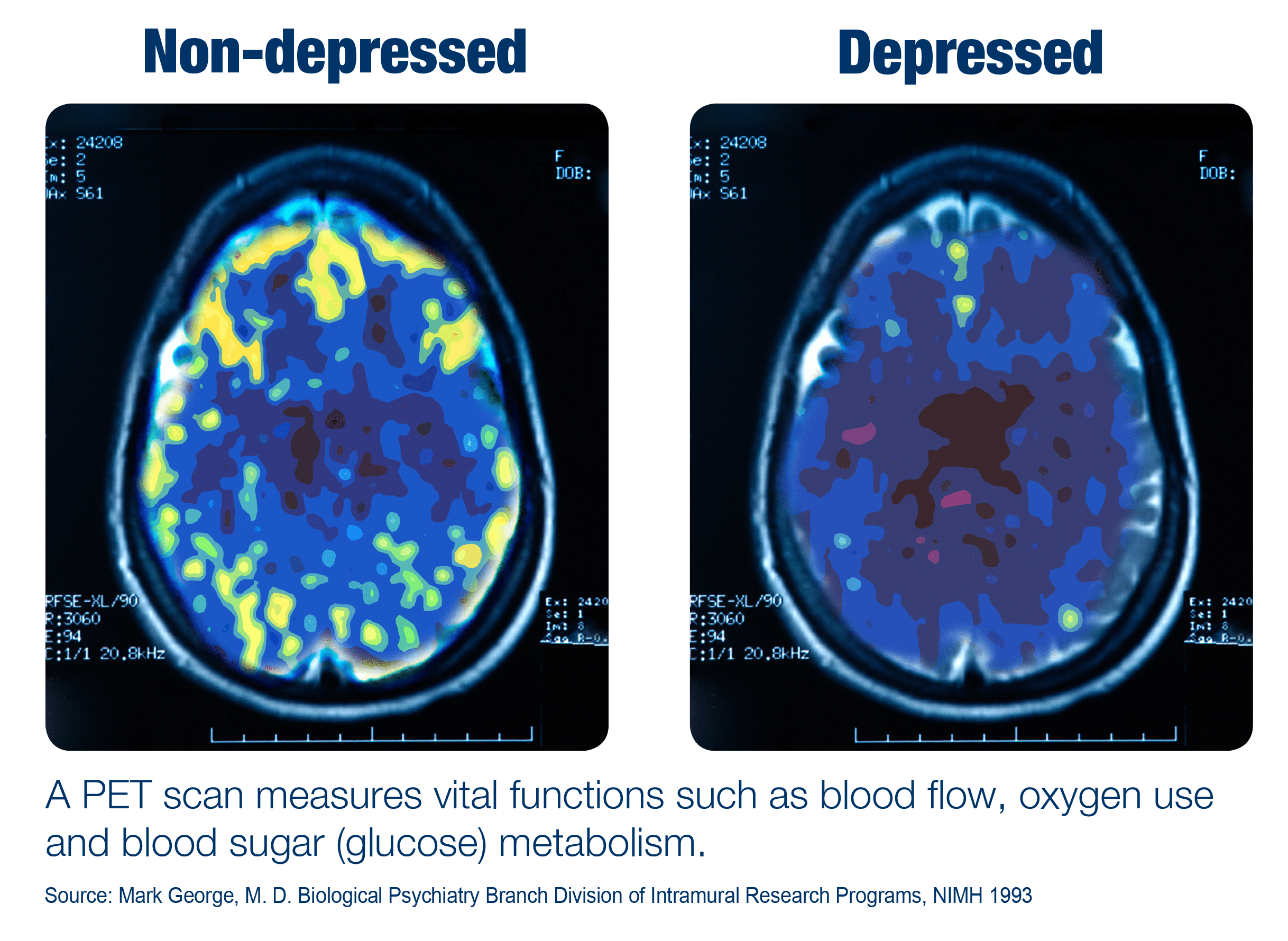How Does TMS Work?

When most people think about depression, they picture the emotional and behavioral effects, such as someone not being able to get out of bed or feeling very sad and empty. We tend to associate depression with how we act and feel but fail to remember the connection between depression and the brain.
Studies have shown that there are visual and physical differences between a depressed brain and a normal brain. When performing scans on a non-depressed brain, they were able to see certain areas of the brain light up when performing normal day-to-day activities. The scan was able to light up the areas where glucose and oxygen, which power our neurons, were being utilized. The researchers found in individuals who were not depressed had higher activity in several regions; the frontal lobes and the central areas where the limbic system resides. The limbic system is the part of the brain engaged in our emotional and behavioral responses. In a depressed brain, those areas are often under-active.
With that in mind, TMS (transcranial magnetic stimulation) can wake up those under active pathways. With your first initial brain mapping, we can locate the ideal stimulation intensity and the anatomical placement of the magnetic coil. This electromagnetic coil will be placed over the left dorsolateral prefrontal cortex, which is the area of the brain in charge of regulating mood. Through the treatment coil, there will be concentrated magnetic fields which will produce small electrical currents. These electrical currents will conjure enough energy for neurons to reach an action potential. This allows the neurons to wake up and begin to release neurotransmitters like dopamine and serotonin. This process is thought to stabilize the chemical imbalance that scientists believe depression has on the brain.
Through many sessions of TMS, these small electrical currents are activating pathways that have been idle. The common course of TMS is around 36 sessions and during those sessions, you are free to relax. Most patients spend their time watching movies, listening to music, or reading books, and at the end of their session, they can drive themselves home. Committing to TMS Therapy is like practicing the piano, the more you practice the better you will be. With every appointment, your brain is building up its emotional strength to combat depression.
Studies show that 83% of patients responded to TMS and 62% of patients achieved complete remission of symptoms after 4 to 6 weeks of treatment and lasted 12 months. If you or someone you love, have been unsuccessful with anti-depressants and are suffering from depression please give us a call. We are happy to consult with you regarding TMS.
If you would like to see if TMS is right for you, take our quiz.